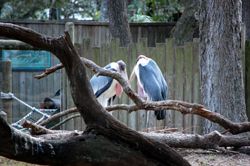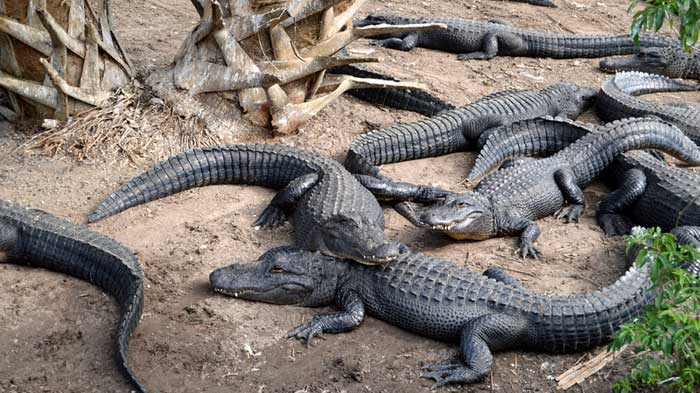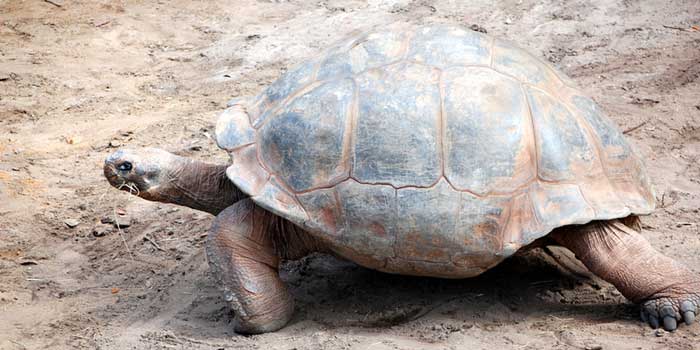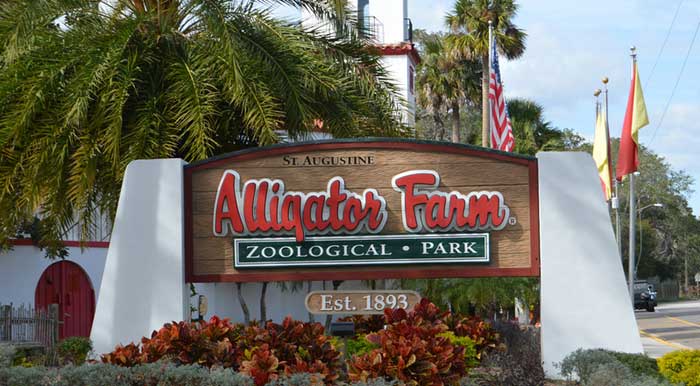One thing is made apparent as you explore parts of Florida — there are gators out there. Warning signs dot the landscape by most public water, rivers, and lakes. So it should be no surprise that Florida is also home to a Zoological Park dedicated to the reptile.

South Beach Alligator Farm in 1910 at its original location.
St. Augustine Alligator Farm is one of the oldest continuously operated attractions explicitly created for entertaining visitors in Florida. In the late 1800s, George Reddington and Felix Fire began collecting alligators on Anastasia Island. This coincided with the first decade of St. Augustine’s emergence as a popular tourist destination, thanks largely partly to wealthy oil tycoon Henry Flagler’s efforts to make the city a winter haven. Reddington and Fire capitalized on tourism and opened the first St. Augustine Alligator Farm at South Beach in 1893.
Initially, the gators were used to attract visitors to a small museum and souvenir shop on the beach at the terminus of a tram railway that ran across the Island. However, Reddington and Fire discovered that the reptiles were a bigger draw for the public’s fascination and, in 1909, incorporated the South Beach Alligator Farm and Museum of Marine Curiosities.
Guidebooks promoted the attraction, including alligators and numerous species of area snakes and other wild animals. Quickly they earned the reputation as “the world’s largest alligator farm,” with reportedly thousands of reptiles by 1916. But a massive storm in September of 1920 washed out the railroad tracks near South Beach, ending the tram service that brought visitors and isolating the attraction. A fire that December, and another just four months later, would destroy their facilities.
As luck would have it, though, Fire and Reddington had already begun plans to relocate and had found a ten-acre tract of land a couple of miles north of the original location, still on the Island but closer to the tourist hotels and near the lighthouse, a landmark also frequented by visitors. Progress was already made on the new facility shortly after the storm, so the relocation was fast.
George Reddington bought out Felix Fire’s interest in the farm by 1934, but Fire stayed as the attraction’s curator. Reddington and his wife Nellie managed the facility until 1936, when they sold the Alligator Farm to W.I. Drysdale and F. Charles Usina, young St. Augustine businessmen. At the time of their purchase, the facility included only a wood frame building with offices, a gift shop, and an entrance to the outdoor exhibit. Several acres remained undeveloped from the move in 1920. Then fire struck again only a few months after Drysdale and Usina took control, destroying the main building.
Being aggressive businessmen, they immediately began to rebuild the facilities, which would contain offices, a taxidermy shop, a gift store, and a new entrance into the attraction. At the same time, they began improving the exhibits, expanding their collection to include other animals and reptiles, and winning the facility much publicity for its exhibit of Florida’s native wildlife. Thousands of servicemen who visited the Alligator Farm during World War II also helped spread its popularity.
The collection of alligators, crocodiles, and other animals provided a unique opportunity for scientists to conduct research in cooperation with the facility, which publicized the plight of endangered wild alligators, who came close to extinction in the 1960s and ’70s.

St. Augustine Alligator Farm Zoological Park
Usina died in 1966, and Drysdale continued operating the attraction until handing over the reins to his son David in the early 1970s. During that same decade, exhibits were continually improved, and a nature trail was added. A roofed theatre and open amphitheater were built and used for formal exhibitions and lectures on the behavior and habits of the reptiles. With cooperation from the Florida Audubon Society, the expansion of the rookery became home to wild and unconfined herons, ibis, and egrets.
Under David Drysdale’s leadership, the Alligator Farm became a key proponent of wildlife research and conservation. Since 1989, The American Association of Zoos and Aquariums (AZA) has extended accreditation to the facility, elevating it to a select list of zoological facilities throughout the nation recognized for the quality and care of their collections.
In 1992, the St. Augustine Alligator Farm’s role in developing tourism in the state was recognized with its listing on the National Register of Historic Places. A new milestone was achieved when the Land of Crocodiles opened a year later. Today, the facility is the only one in the world with live specimens of all 24 currently recognized crocodilian species.
In 2001, the Anastasia Island Conservation Center opened and is home to the AZA’s Crocodilian Biology and Captive Management School, which is part of the association’s Professional Development Program.
To give visitors a different kind of view of the park, in 2011, Crocodile Crossing was added, which is a zip-line allowing participants to zip over the entire facility.
For more information visit:
St. Augustine Alligator Farm Zoological Park
999 Anastasia Blvd.
St. Augustine, FL 32080
©Dave Alexander, Legends of America, updated February 2022.
Also See:
Ripley’s Believe It or Not! Odditorium
A Walk Through Our Nations Oldest City – St. Augustine (Photo Blog)
Sources:
Library of Congress
Onsite Historic Marker
St. Augustine Alligator Farm Zoological Park



